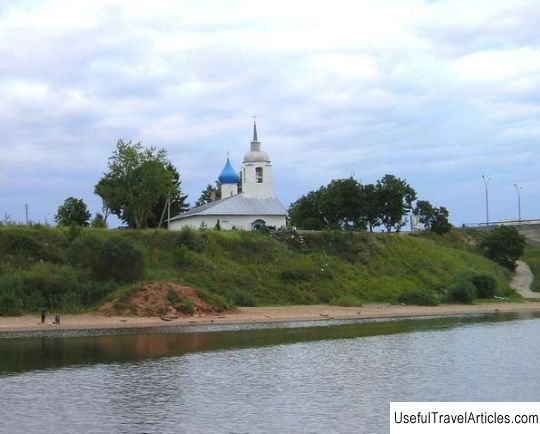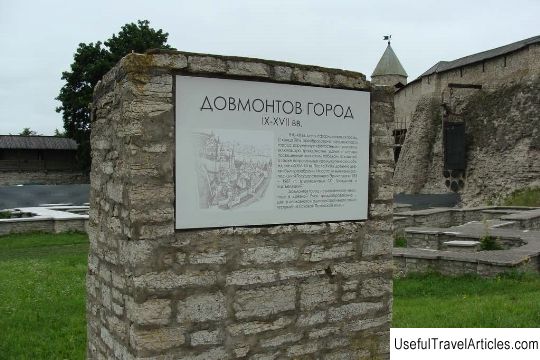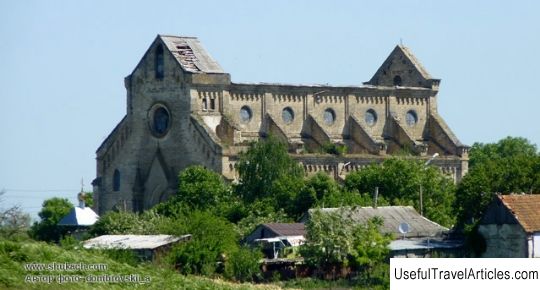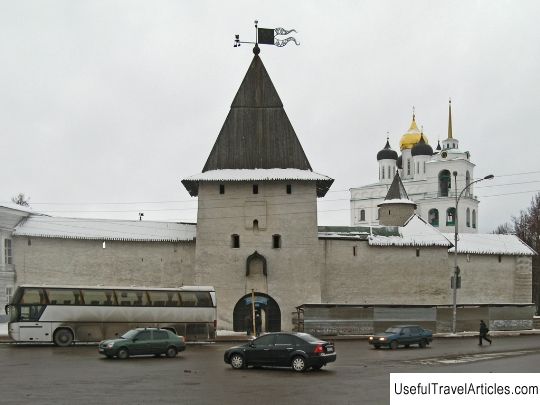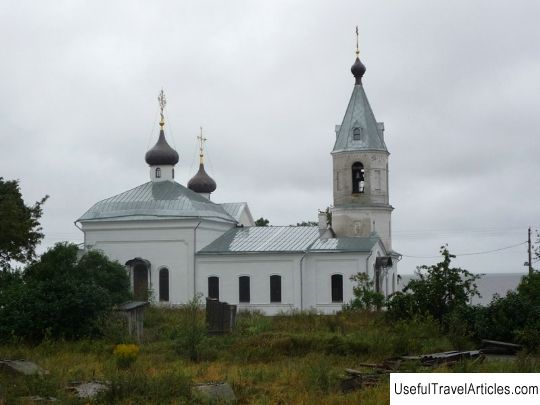Church of Peter and Paul with Bui description and photos - Russia - North-West: Pskov
Rating: 8,2/10 (1232 votes) 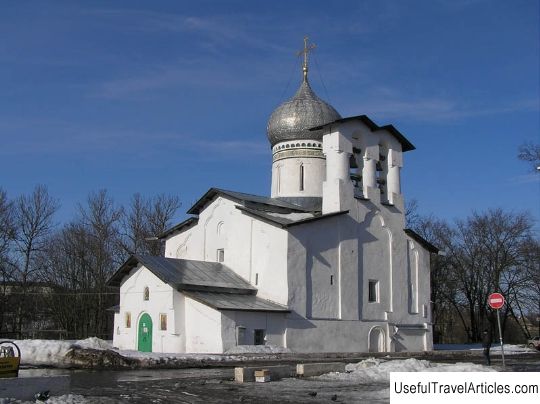
Church of Peter and Paul from Bui description and photos - Russia - North-West: Pskov. Detailed information about the attraction. Description, photos and a map showing the nearest significant objects. Photo and descriptionNot far from Plosky Uzviz, there is a transverse slab "wall of the mayor Boris", which was built in 1309. This wall protects the city from the side of the famous Pskova River and approaches the Church of Peter and Paul from Bui, erected on the same place during the reign of the Grand Duke Dovmont. Information has reached our days that shortly before the death of the prince in 1299, troops of German knights unexpectedly approached the city of Pskov, who brutally ravaged the surrounding monasteries, including Snetogorsky and Mirozhsky. It was near the Peter and Paul Church that Prince Dovmont dealt a crushing blow to the unexpected German guests. It is still not known exactly what the temple of Paul and Peter was, which became a real symbol and evidence of the victory of the Pskovites over the German knights at the end of the 18th century. The already stone church of Peter and Paul from Bui was built not far from the wooden church destroyed in 1373; in 1540 the temple was radically rebuilt. It is the last stone Peter-Pavlovsky church that has survived to this day, having undergone various alterations and restructuring. The Konchanskaya Church of Peter and Paul in modern times plays a rather important and noticeable role in the compositional and architectural appearance of the area. Four or five centuries ago, the church quadruple looked a little higher, because the cultural layer reaches a fairly large thickness. The temple looked especially monumental and solemn from the side of Krom, but still more from the side of Zapskovye, although one cannot say that the temple was distinguished by its large and impressive size. This circumstance was facilitated by the favorable location of the church at the very edge of the cliff and at the winding coastline; in addition, the picturesque silhouette of the entire structure also played an important role in the general view. The temple had three fairly global repairs, which alternated with almost a hundred-year interval and led to the fact that some of the side-chapels were lost, the belfry in two spans on the southwestern wall of the quadrangle, the old chapter, and more. Recently, as a result of the work of the restorers, some part of the temple has been restored. As for the internal component of the church, it can be emphasized that it was quite peculiar. The church has four pillars and has beautifully and detailed vaults, which rest on pillars, connected by arches. The Church of Peter and Paul had tents in the northwestern and southwestern corners of the main volume, which served as small side-chapels connected by wooden choirs. Another side-chapel was attached to the outer part of the north-western corner of the quadrangle, and the fourth and fifth chapels were in their usual places, i.e. at the southeastern and northeastern corners of the quadrangle had a gallery connection. The whimsical appearance of the Peter and Paul Church is determined by a combination of the most varied and different-sized domes that surround the main dome. The heads of the side-altars and the main temple had a roofing in the form of tiles, which fully corresponded to the tiled mite located on the upper part of the drum, where an inscription was found about how the construction of the church took place. Modern iron cover of the head, decorated with figured embossing, as well as an openwork cross, apparently, were made during the renovation in the early 18th century. The drum windows are made very narrow and have side edges, and the cornice is decorated with a small row of peculiar kokoshnik arches. The facades of the church, located on the side, have a completely asymmetrical end of the chapel on the south and north sides. Three low apses are arranged symmetrically and have different heights and conical coverings, and are decorated with several rows of squares and triangles literally pressed into the surface. Summing up all of the above, we can say that the Church of Peter and Paul from Bui is a type of Konchan churches and differs markedly from the traditional decorations characteristic of Pskov, namely, a kind of ceramic belt located on a drum, as well as a temple created inscription. In 2006, restoration work in the temple was completed, and on July 12 of the same year, the temple was consecrated, after which the temple became operational.     We also recommend reading Cape Columbo description and photos - Greece: Santorini Island (Thira) Topic: Church of Peter and Paul with Bui description and photos - Russia - North-West: Pskov. |
